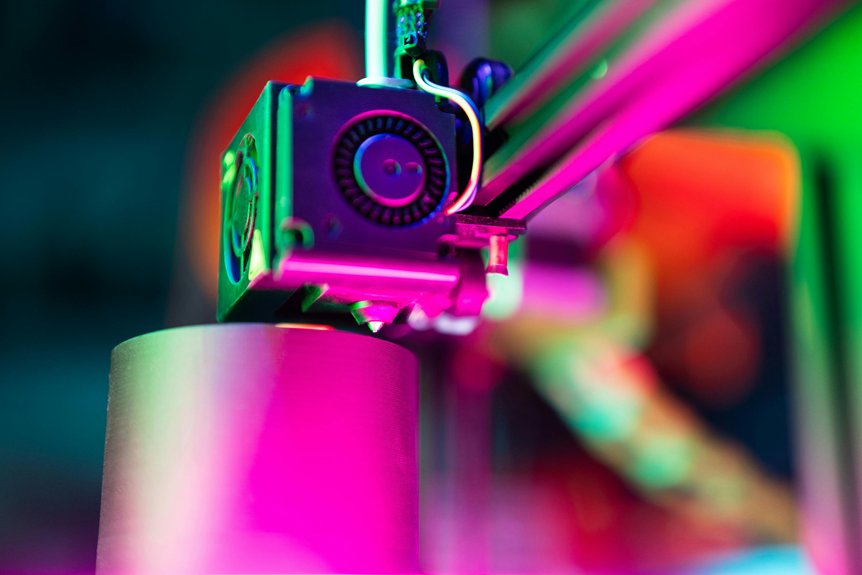In product development, integrating 3D printing can streamline your process from concept to final product. By understanding how to choose the right technology and materials, you can create prototypes that test and refine your designs quickly. But knowing where to start and how to make the most of additive manufacturing isn’t always straightforward. Let’s explore how you can leverage 3D printing effectively at every stage of development.
Assessing Your Project’s Needs and Goals
Before diving into 3D printing, you need to clearly define your project’s needs and goals. Start with thorough market research to understand demand, competition, and potential applications. Conduct a detailed cost analysis to evaluate expenses related to materials, equipment, and time. Knowing what you want to achieve helps you select appropriate 3D printing methods and materials later. Clarify whether your goal is rapid prototyping, small-batch production, or design validation. This upfront planning guarantees your project stays focused and efficient, preventing costly mistakes or misaligned expectations down the line. Proper assessment sets a strong foundation for successful product development with 3D printing. Additionally, conducting a patent search can help identify existing intellectual property and ensure your design remains original.
Selecting the Right 3D Printing Technology and Materials
Once you’ve identified your project’s goals, selecting the appropriate 3D printing technology and materials becomes the next step. You need to take into account material compatibility to guarantee your chosen materials meet your product’s strength, flexibility, and durability requirements.
Cost considerations also play a vital role; some materials and technologies are more affordable but may sacrifice detail or strength. For example, FDM is budget-friendly for prototypes, while SLA offers higher precision for detailed parts.
Designing for Additive Manufacturing
Designing for additive manufacturing requires you to tailor your designs specifically for the strengths and limitations of 3D printing processes.
Focus on aesthetic considerations by leveraging complex geometries and surface finishes unique to 3D printing.
Guarantee material compatibility by selecting compatible materials that can handle the design’s functional and aesthetic requirements.
Avoid overly intricate details that may be difficult to print reliably, and consider how supports and overhangs will affect production.
Creating Effective Prototypes for Testing and Validation
Creating effective prototypes is a vital step in testing and validating your designs before moving to full-scale production. 3D printing enables rapid prototyping, so you can quickly produce functional models that resemble the final product’s features. This accelerates your testing process and helps identify design flaws early.
Use the prototypes for material testing to evaluate strength, flexibility, and durability, ensuring your chosen materials meet your requirements. By iterating rapidly, you can refine your design efficiently, saving time and costs.
Effective prototypes provide valuable insights, allowing you to make informed decisions before committing to full-scale manufacturing.
Streamlining the Iterative Design Process
To streamline the iterative design process, leveraging 3D printing allows you to quickly produce multiple refined prototypes without significant delays. This enables rapid iteration, so you can test and refine your designs more efficiently.
Material versatility is a key advantage, giving you access to a wide range of materials that suit different functional and aesthetic requirements.
With quick turnaround times, you can experiment with various concepts, identify issues early, and make improvements faster. This approach reduces development cycles, cuts costs, and accelerates your path to a final, optimized product.
3D printing truly transforms how you iterate and innovate.
Integrating 3D Printing Into Your Existing Workflow
Integrating 3D printing into your existing workflow requires careful planning to maximize its benefits without disrupting established processes. Begin by understanding material properties to select the right filament or resin for your project’s strength, flexibility, and temperature resistance.
Incorporate post processing techniques early, such as sanding or curing, to improve finish and accuracy. Coordinate your design-to-production timeline, ensuring 3D printing steps align with traditional methods.
Use compatible software and hardware to streamline shifts. By considering material properties and post processing, you’ll create a seamless integration that enhances your product development cycle efficiently.
Ensuring Quality and Accuracy in Printed Parts
Achieving high quality and accuracy in printed parts requires careful calibration and process control. Start by following consistent calibration procedures to guarantee your printer operates correctly, which helps maintain dimensional accuracy.
Material consistency is also essential; always use the same filament batch and store materials properly to prevent deviations. Regularly check and fine-tune your printer’s settings, including bed leveling and extrusion rates.
Monitoring these factors minimizes errors and produces reliable parts. By maintaining strict calibration routines and consistent materials, you can markedly improve the precision and overall quality of your 3D printed components.
Scaling Up Production and Transitioning to Final Manufacturing
As you prepare to scale up production, shifting from small-batch 3D printing to full-scale manufacturing requires careful planning and process optimization. Focus on integrating mass customization to meet diverse customer needs efficiently.
Streamline your supply chain by standardizing components and leveraging local production to reduce lead times and costs. Moving seamlessly involves verifying quality consistency and ensuring your equipment can handle larger volumes.
Conclusion
By understanding your project goals and carefully selecting the right technologies and materials, you can maximize 3D printing’s potential in product development. Designing thoughtfully and creating effective prototypes will help you test and refine your ideas quickly. As you progress, streamline your workflow and focus on quality to ensure consistent results. When you’re ready, scale up production confidently, making 3D printing a valuable tool throughout your product development journey. To learn more about how to bring your idea or invention to market, visit us online at Inventors IPO.

